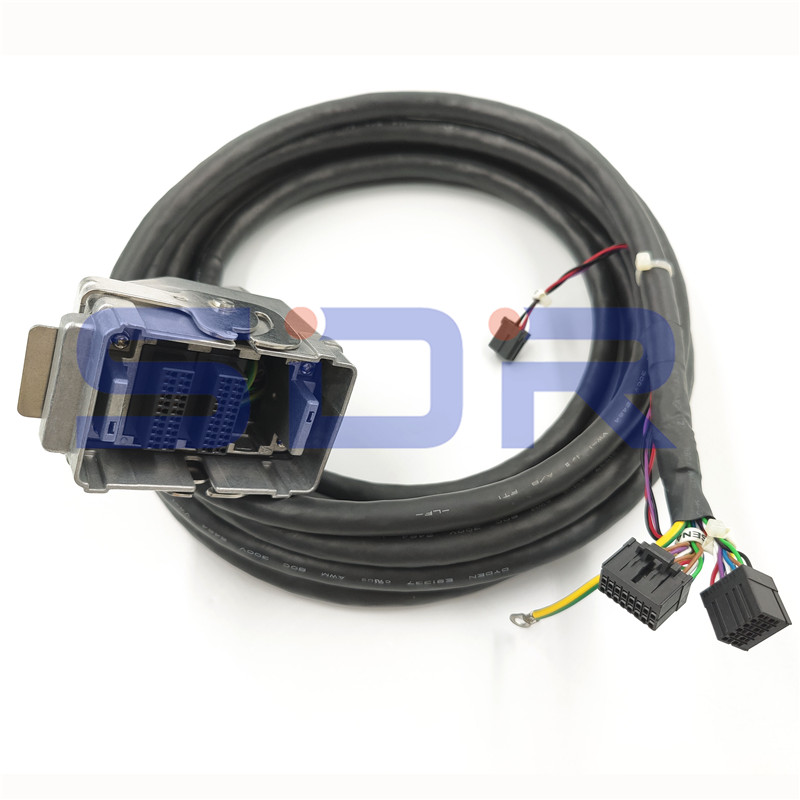With the continuous development of industrial automation, robotics is playing an increasingly important role in manufacturing. As one of the most important components of robots, NACHI Robot Cables (NACHI Robot Cables) play a crucial role in realizing robot motion and control.

1. Structure of NACHI Robot Cables
NACHI Robot Cables are usually designed with complex structures to meet the high demands of robot motion and control systems. The basic structure usually consists of the following parts:
Conductor: Made of high-purity copper or aluminum, it has good electrical conductivity and mechanical strength to ensure the stability and reliability of current transmission.
Conductor insulation: insulating material covering the surface of the conductor, used to isolate the conductor from direct contact with the external environment, to prevent current leakage.
Shielding layer: used to block external electromagnetic interference, usually composed of aluminum foil, tinned copper mesh and other materials to ensure the stability of signal transmission.
Insulation layer: Insulation material covering the outside of the shielding layer, used to protect the shielding layer from damage and improve the durability of the cable.
Sheath: Usually made of abrasion-, oil-, and heat-resistant materials, it is used to protect the cable from damage caused by the external environment and to increase the service life of the cable.
2. Features of NACHI Robot Cables
NACHI Robot Cables have many unique features that make them popular in the industrial robotics field:
High anti-interference ability: The shielding layer of NACHI Robot Cables is designed to effectively block external electromagnetic interference, guaranteeing the stability of signal transmission and improving the accuracy and stability of the robot system.
Wear-resistant and corrosion-resistant: The outer sheath is made of wear-resistant, oil-resistant, and high-temperature-resistant materials with good durability and corrosion-resistant, which is suitable for a variety of harsh working environments.
Flexibility: NACHI Robot Cables have good flexibility and bendability, which can adapt to the robot's complex trajectory and working environment, ensuring the smoothness and stability of robot movement.
High reliability: The use of high-quality materials and precision manufacturing process guarantees the reliability and stability of the cables, reducing the failure rate and maintenance costs.
3. Application areas of NACHI Robot Cables
NACHI Robot Cables have a wide range of applications in the field of industrial robotics, including but not limited to the following:
Automobile manufacturing: for welding, assembly, and handling on automobile production lines.
Electronics Manufacturing: Used in the assembly, testing, packaging, and other production processes of electronic products.
Medical devices: used for control systems of medical robots, such as surgical robots, imaging equipment, etc.
Aerospace: used in aircraft, satellite and other aircraft equipment such as robotic arms, navigation systems, etc.
Logistics and Warehousing: Control systems for stacker cranes, conveyors, and other equipment used in automated warehousing systems.
NACHI Robot Cables play an important role in these fields, supporting motion and control systems for industrial robots and promoting automated production and manufacturing.
4. Future Direction of NACHI Robot Cables
As industrial robot technology continues to advance, NACHI Robot Cables will also see new opportunities for development:
Intelligent: Future NACHI Robot Cables may integrate sensors and other intelligent components to realize real-time monitoring and management of cable operation status and improve the automation level of the robot system.
Lightweight: Adoption of new materials and processes to reduce the weight of cables and increase the speed and flexibility of robot movement.
Energy-saving and environmental protection: Adoption of low-energy-consuming materials and production processes reduces the consumption of resources, lowers production costs, and improves the sustainability of cables.
NACHI Robot Cables, as a key component in the field of industrial robots with complex structures and unique features, are widely used in various fields and will continue to play an important role in the future, driving the progress and development of industrial automation technology.